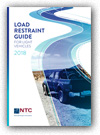Useful Load Securing Resources
 |
Safe Work with Precast ConcreteThis has been produced by the Government of New Zealand. |
 |
Load Restraint Guide for Light VehiclesThis has been produced by Australia's National Transport Commission. |
 |
Load Restraint Guide 2018Each module of this Guide can be used independently of the others. Where relevant, the guide will point you to other modules for more information. |
 |
UK Government Guidance on Load SecuringVehicle operator guidance compiled by the UK's DVSA. |
 |
Rachet Straps LeafletThis leaflet was produced by Health and Safety Laboratory and Highways England in the UK. |
Safe Loading and Cargo Securing checklist [IRU]In order to improve load safety in practice, the IRU has developed this checklist of harmonised tips for safe loading and load securing. |
|
European Best Practice Guidelines on Cargo Securing for Road TransportThe purpose of these guidelines is to provide basic practical advice and instructions to all persons involved in loading/unloading and securing cargo on vehicles, including carriers and shippers. |
|
Load Security on Curtain Sided Vehicles [HSE UK]The project seeks to establish good practice for securing loads on curtain sided lorries across various industry sectors. Good practice in this case is defined as those methods that are the most practical, involve the least risk of loads becoming unstable or falling, least risk to the operator/driver, and are practicable.
|
|
Driver & Vehicle Standards Agency (UK) Guidance on Load SecuringThis guide sets out to complement existing Department for Transport (DfT) guidance and the European Commission (EC) code of practice, providing operators from different sectors of industry with useful information on how DVSA and other regulators expect loads to be secured when in transit. |
|
|
Health and Safety Executive (UK) Web Resource on Load Safety A web resource produced by the HSE UK containing a range of guidance on Load Safety. Information and publications on how to secure loads safely on vehicles. |





